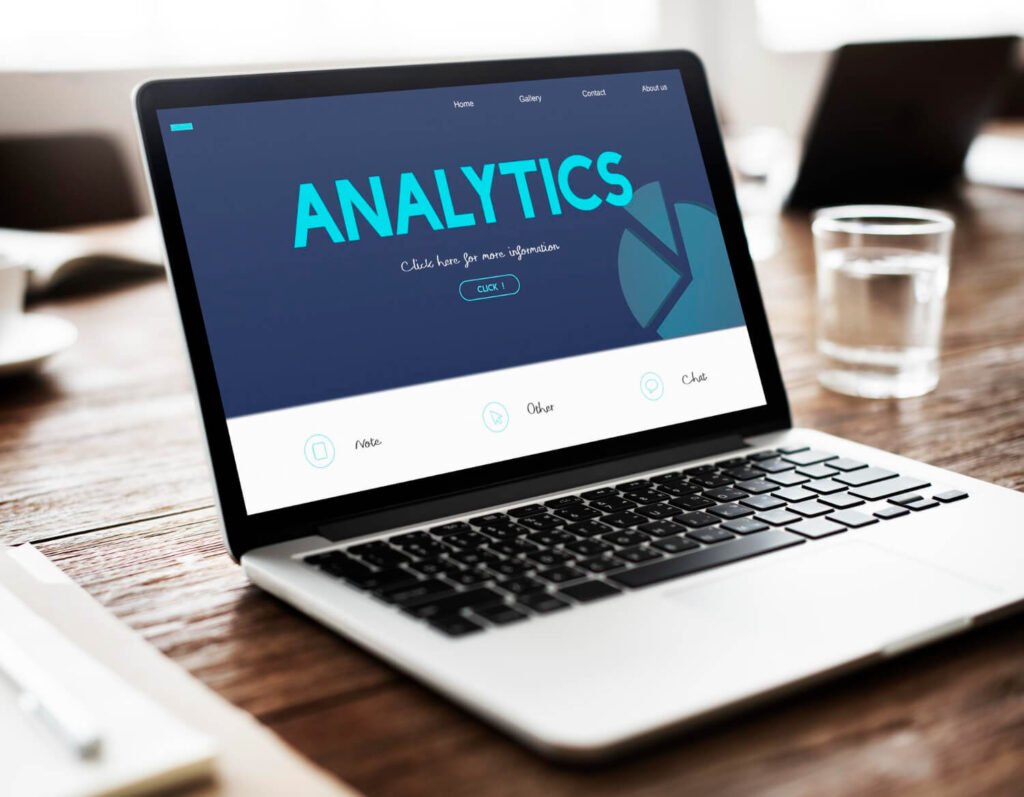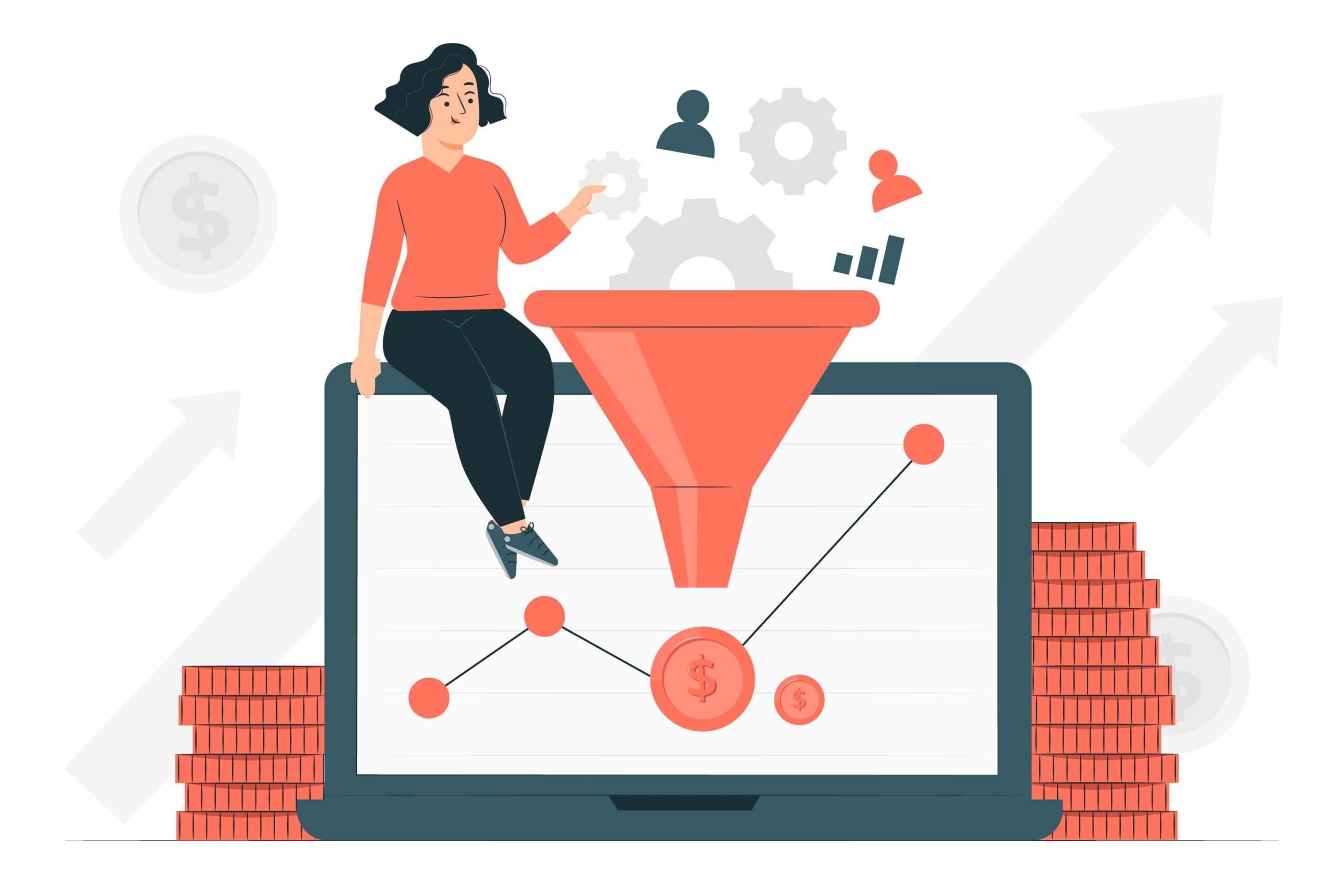Web design is no longer purely an exercise in aesthetics. Today, the most successful websites are those strategically built upon a deep understanding of user behaviour. That’s where data-driven design comes in. By meticulously analysing your website analytics, you gain actionable insights that inform design decisions and boost website conversions. This approach replaces intuition with evidence, ensuring that every element of your website works hard to achieve your business goals.
Key Metrics for Data-Driven Web Design

There are several crucial metrics within your analytics dashboard that hold the key to design improvements. Let’s explore some of the most important for those who want to boost website conversions.
- Traffic Sources: Understanding how visitors find your site – whether through organic search, paid advertising, social media referrals, or direct traffic – informs design priorities. For example, optimising landing pages for those keywords and user intent becomes essential if paid search drives significant traffic. Conversely, high direct traffic indicates strong brand recognition and the need to provide a seamless experience for returning users.
- Bounce Rate: A high bounce rate (users leaving after only one pageview) often signals a mismatch between what the visitor expected and what your page delivers. Analysing page-specific bounce rates and overall metrics helps pinpoint content or design deficiencies. Poor loading speed, confusing navigation, and irrelevant content can all contribute to a visitor abandoning your site quickly.
- Popular Pages: Which pages see the most traffic, longest visit durations, and lowest bounce rates? These content stars reveal what resonates with your target audience. Replicate their successful design elements, expand on those topics, or consider building topic clusters around your highest-performing pages.
- Heatmaps & Scroll Tracking: These visualisation tools paint a clear picture of how users engage with your site. They reveal where people click, how far they scroll, and which areas get ignored. This data is invaluable for planning your call to action (CTA) buttons appropriately or identifying distracting design elements that pull users away from your intended conversion paths.
Using Analytics to Improve Design and Boost Website Conversions

So how do we translate these data points into tangible design changes that boost website conversions?
- Navigation Fixes: Your analytics will highlight if people struggle to find the information or products they seek. High bounce rates on specific subpages may indicate poor menu structure, unclear labelling, or a lack of intuitive hierarchy within your website’s navigation. Prioritise simplifying navigation and ensuring key content is easily discoverable.
- Content Optimisation: While keywords are important for search engine visibility, your content must be engaging enough to convert human visitors. Web analytics reveals which pieces succeed and which fall flat. Use this data to revamp underperforming articles, blog posts, or product descriptions – better visuals, stronger storytelling, or addressing frequently asked questions can boost their conversion power.
- Landing Page A/B Testing: Stop guessing which landing page layout, headline, or CTA will perform best. Data-driven design relies on A/B testing. Run controlled experiments, comparing variations of crucial pages to see which version boosts website conversions definitively.
- Call to Action Clarity: Are visitors taking your desired actions (subscribing, contacting sales, purchasing)? Analytics helps evaluate if your CTAs are even being noticed, if their placement is ideal and if the language is compelling. Sometimes, simple tweaks to colour, size, or wording can boost click-through rates substantially.
- Design for Attention Spans: Average session duration and scroll depth inform how you structure your content. If most mobile users drop off halfway through a page, consider streamlining it or front-loading vital information. Data helps you customise the design to match your audience’s online habits.
The Power of A/B Testing
A/B testing is arguably the most powerful tool in a data-driven designer’s toolkit and its beauty is that the results often defy expectations. What a designer believes is “better” may not influence conversions. Letting the data be your guide eliminates those biases. It allows you to go beyond assumptions about user preferences and determine, with scientific precision, what truly drives results. To perform an A/B test,
- Identify a Goal: Pinpoint a specific conversion metric you want to improve. Examples include increasing email newsletter sign-ups, boosting demo requests on a product page, or reducing shopping cart abandonment.
- Form a Hypothesis: Don’t simply change elements at random. Base your test on a prediction. For instance: “Changing the ‘Buy Now’ button color from green to orange will increase clicks by 5% because it will create stronger visual contrast.”
- Create Variations: Design two versions of the element you’re testing (often referred to as Version A and Version B). Importantly, only change a single variable at a time to isolate what impacts results.
- Run the Test: A/B testing tools (Google Optimize offers a free option, and many others exist) will automatically split your website traffic between the two variations for a set duration, tracking all relevant data.
- Analyse & Implement: Once your test reaches statistical significance, the data reveals the winning variation. Implement this version across your site, confident that the change is backed by user data, not just guesswork.
Conclusion
A data-driven web design isn’t just a smart tactic – it’s a necessity for websites that consistently achieve business goals. By treating your analytics not merely as numbers, but as a real-time reflection of user behaviour, you unlock the potential to transform every aspect of your website into something that boosts conversion. The process is ongoing, iterative, and always focused on the bottom line.
Ready to use data maximally within your website? Start with a free website audit from Edens Digital. Our team of experts will analyse your analytics, identify conversion bottlenecks, and provide a roadmap for data-driven design improvements. Get started today and watch your conversion rates soar!





